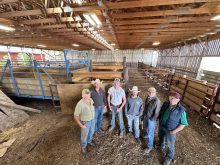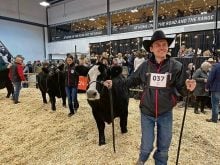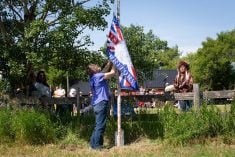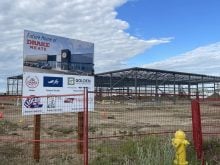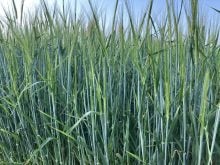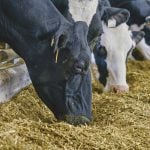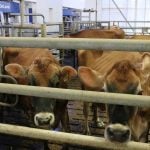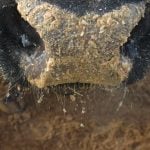Don and Marie Ruzicka had been farming for over a decade when circumstances shifted, nudging them on a new course.
Although Don Ruzicka had grown up on a mixed farm, after university he spent several years working in the timber industry, with no intention of coming back to the farm. But things changed and eventually he and Marie purchased a farm northwest of Killam, Alta., from his aunt and uncle. Ruzicka’s grandparents had settled on the same farm around 1915.
In the early ’80s, the Ruzickas and their three children moved to the farm, and Ruzicka farmed with his brother and father. Ruzicka’s grandparents had called the farm Sunrise Farm, after the school district of Sunrise. Don and Marie carried on the tradition — today their farm is called Ruzicka Sunrise Farm.
Read Also
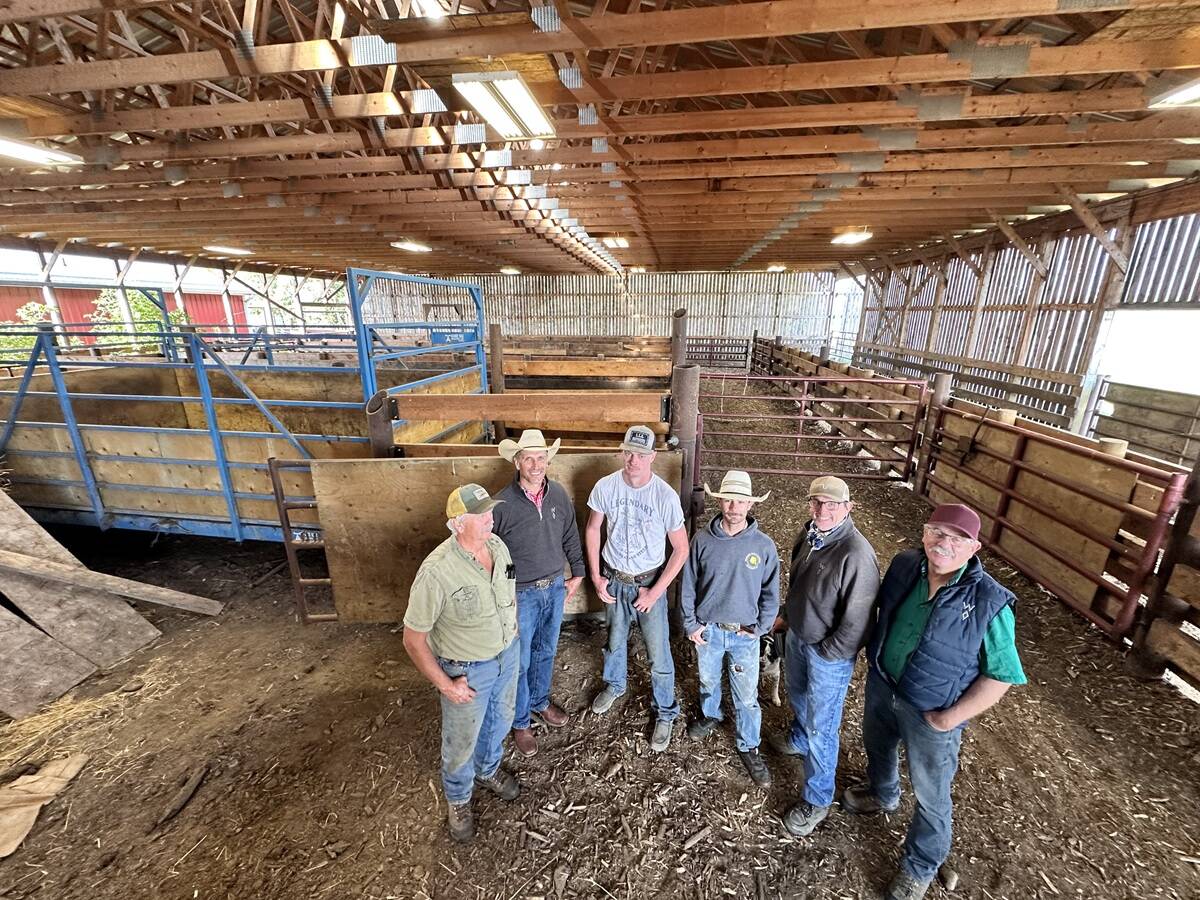
Farm families work together to graze cropland with cattle in the fall
These Alberta farm families have separate operations, but work together to manage their land
The farm ticked along for several years.
“Although we’d taken out a large mortgage to purchase the farm, everything went fairly well until 1989,” says Ruzicka. “Then my brother wanted to expand, which involved getting further into debt, and an operating loan. After that, we were borrowing more and more.”
After farming conventionally for 12 years, with their kids now grown and harvest in the bin, the Ruzickas asked themselves if they should “continue this journey of uncontrollable debt, or sell and move, or stay and try another way of farming,” Ruzicka says.
He and Marie enrolled in an eight-day course in holistic management that sparked new ideas about the land, soil, grazing and the benefits of rotational, multi-species grazing. They sold a half-section of land to get out of debt and downsized from 55 cows and a sizeable grain operation to 25 cows, pasture-raised poultry and custom-grazed cattle.
Ruzicka’s cattle are mainly Red Poll-Angus cross. Over the years Ruzicka built his herd on grass-based genetics — cattle that can finish nicely on grass. He also met Dylan and Colleen Biggs, who raise grass-fed cattle in Alberta and operate TK Ranch. They had brought Allan Savory to their ranch in 1986 to give a course and started raising grass-finished beef. The Ruzickas have leased some of the Biggs’ Angus and Angus-Gelbvieh cross bulls, as they cross really well with the Red Poll cows.
“Our use of Dylan Biggs’ bulls over the years has made a difference because Dylan has been culling and selecting for years for grass-finishing cattle.”

The Red Poll cows, being dual-purpose, do occasionally produce a heifer that looks too much like the dairy side, producing too much milk for a beef cow, says Ruzicka.
“By about her third calf her udder would be drooping. That’s the downside, but we’ve had exceptionally good luck with the Red Poll because they dress out well, their marbling is fantastic and they are very docile.”
Ruzicka has also custom-grazed the Biggs’ cattle. Dylan Biggs teaches low-stress handling, and Ruzicka says he’s learned a lot from him.
“These cattle are a joy because they are easy to handle,” says Ruzicka. It makes a big difference when cattle are handled this way, and they trust you, he adds.
TK Ranch is animal welfare approved, so they only buy from other farms that are approved, such as Ruzicka Sunrise Farms.
“They were buying our yearlings at a premium — 10 cents per pound over market — so instead of trying to build a market where we sell everything slaughtered as meat, we thought we would also sell a few yearlings.”
One year Biggs needed some heifers and the Ruzickas had nine. Ruzicka needed to keep five. Ruzicka and Biggs took turns picking heifers, with Ruzicka picking first.
“I picked the one I knew was the best, and he picked what I thought was pretty close to the bottom. By the time we were done I had what I thought were four of the best heifers and he had three of the worst ones, so I asked why he picked those,” says Ruzicka.
Biggs pointed out that despite the heat, there were no flies on the heifers he’d picked. He figured there was something in the oil in their hair that deterred flies. Biggs had been breeding for fly resistance. He said he could take a cow or heifer with this fly resistance trait, and if it was passed onto her offspring, he could breed a good udder onto her calves from the sire side.
Planning for drought
“I don’t handle stress well, so I do my best to avoid it. Running out of forage for the cattle is too stressful,” says Ruzicka.
The 2002 drought was a wake-up call, influencing how Ruzicka planned grazing.
Ruzicka has about 60 acres of sloughs out of 640 acres of tame and native pasture. Until then, he grazed all the sloughs every year, whether they were dry or wet.
“In 2008, I fenced the sloughs and decided to not graze them unless we had a drought. Leaving that grass was like an insurance policy. I only grazed them if we were short of grass and the sloughs were dry,” he explains.

He feels that grazing wet sloughs damages them and is risky for the cattle. “The hoof impact and large number of yearlings in a small paddock tends to ‘plug’ the ground so that it doesn’t allow water to infiltrate. Foot rot is another concern,” says Ruzicka.
Also, the willows surrounding sloughs are critical for native pollinators, as pussy willows are the first pollen source in the spring. Cattle can take a toll on willows, he says.
“In 2009, we had water in all these areas from spring runoff. I rotational graze and water is pumped to every paddock so the cattle never have to walk far. Manure and urine are distributed throughout each paddock.”
“By early August that year, the next pastures for the yearlings were not quite ready to be grazed. We have a 15-acre slough that has water in it every spring. By August it was dry with three-foot growth of slough grass which was still palatable. This slough and a few others kept the yearlings happy for two weeks and allowed us to get back into our rotation,” he says.
In 2019, Ruzicka didn’t bring in cattle to custom graze until mid-June, as the spring was very cold, slowing growth.
“From late August to early October last fall, we had 5.5 inches of rain that soaked in. Even without any rain this spring, I think we’ll get pretty good growth and one rotation, which would get us into September. The sloughs are still wet but with heat and without rain, they will be dry and topped up with abundant forage by August. So drought or no drought, I feel that this conservative way of grazing works best for the cattle, and for us.”
He has always had an agreement with the stockmen who bring cattle to graze. “They know that if we are running low on pasture, I will give them a week’s notice to come and get the cattle.”



